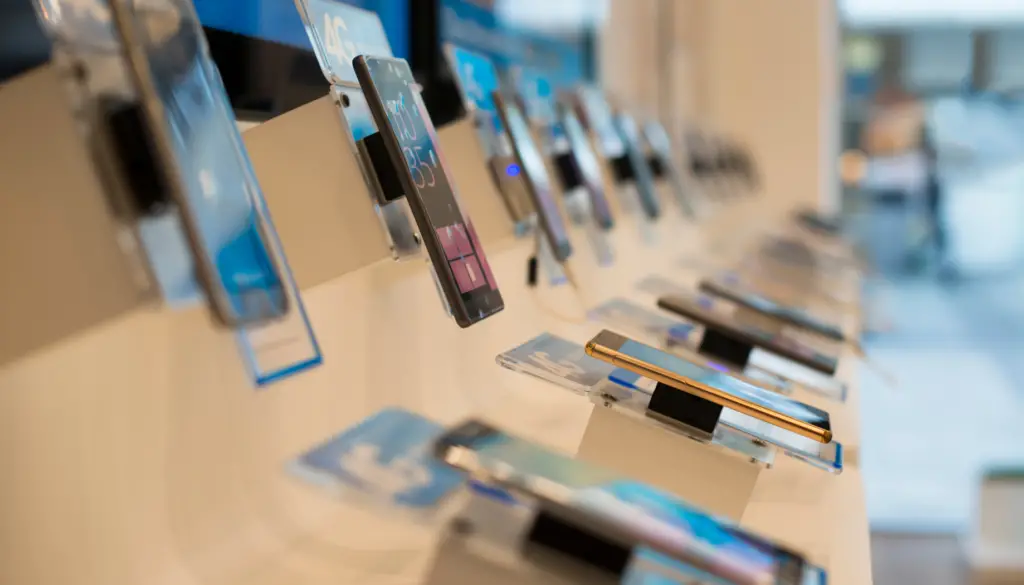If you’re like me and have always wondered if the grass is greener on the other side – or in this case – if Samsung phones are cheaper in their homeland of South Korea, then stick around. Today, we’ll set off on a little journey to answer that very question: Are Samsung phones cheaper in Korea?
In this article, we’ll be diving deep into the world of mobile devices and international pricing. We’ll unravel the mysteries, discover the things that drive up phone prices, and find out if hopping on a plane to Seoul could indeed save you a pretty penny on your next Samsung phone purchase.
Table of Contents
Are Samsung Phones Cheaper in Korea?

Yes, Samsung phones are typically cheaper in South Korea, the company’s home country. This is due to a few factors, such as lower transportation and logistics costs, local subsidies, and home-market advantages. However, the price difference isn’t drastic and varies depending on the model. Keep in mind, phones purchased in Korea may not fully support the network bands in your country, potentially affecting their usability.
According to the electronics price index created by Grover, South Korea is the cheapest place to buy a Galaxy smartphone, followed closely by Indonesia.
In South Korea, you can save around 35% on flagship Galaxy smartphones compared to what you’ll pay on average worldwide.
Indonesia comes in a very close second, saving you around 32% on the median worldwide price.
Interestingly, Belarus and Canada are the two very worst places to buy a Samsung smartphone if you’re looking for a good deal. It can cost you over 40% more to buy a phone in Belarus when compared to the global average price. Canada is pretty shocking also with a 39% increase in the median global average.
Another thing to bear in mind is that by law, all phones in South Korea must emit the characteristic ‘click’ of a camera shutter when a photo is taken, even in silent or vibrate mode. Any Samsung phone you buy there will be set to do this by default and mightn’t be too easy to change when you take your new phone back to your home country.
There may also be differences in the 5G signals between South Korea and your home country. This may result in a spotty connection or might not even work at all and end up defaulting back to 4G.
Understanding Regional Pricing Differences for Samsung Phones
Samsung’s regional smartphone pricing varies due to factors like local business costs, operational expenses, currency fluctuations, market demand, competition, and value-added services. These elements, influenced by local laws, import tariffs, exchange rates, and regional competition, collectively contribute to the final price you see on the tag of a Samsung smartphone in different countries.
The Cost of Doing Business
Firstly, consider the cost of doing business. Every country has unique laws, regulations, and taxes that impact the final price of goods, including smartphones. For instance, in a country with high import tariffs on electronic goods, Samsung may need to price its phones higher to maintain its profit margins.
Operational Costs
We must also talk about operational costs. Samsung has a significant global footprint, and the cost of running operations, including sales and after-sales service, varies from region to region. In countries where these costs are higher, Samsung may choose to reflect them in the phone’s price.
Marketing Costs
Samsung invests heavily in marketing its products. The cost of these campaigns can vary from country to country based on a variety of factors. These include the cost of media, production, and local agency fees. The higher the marketing cost in a particular region, the higher the price of the product might be to compensate for these expenses.
Distribution Costs
Distribution costs refer to the expenses associated with getting a product from the production facility to the retail outlet. This includes costs related to warehousing, inventory management, transportation, and retail setup. In areas where these costs are high, the price of Samsung smartphones may be higher to offset these additional expenses.
Currency Fluctuations
And then, there’s the question of currency fluctuations. Exchange rates can be volatile, and a weak local currency compared to the South Korean Won (Samsung’s home currency) can result in higher local prices. Samsung, like any multinational company, has to consider these fluctuations when setting its prices.
Market Demand and Competition
One more factor to consider is the market demand and competition. Samsung may adjust its prices according to what the market can bear, and what its competitors are charging. If a particular region is more sensitive to price, Samsung might adjust its pricing strategy accordingly to stay competitive.
For instance, competition in China from Chinese phone makers has led to Samsung selling barely any smartphones in China at all.
Value-Added Services
Don’t forget about the value-added services. In some regions, Samsung phones come with additional services like extended warranties, exclusive apps, or even membership services. These extras are often bundled into the phone’s price, leading to apparent differences.
Research and Development Costs
Sometimes, Samsung might introduce region-specific features to cater to local preferences or regulations. The cost of researching and developing these features can be factored into the phone’s price in that region.
Shipping and Logistics Costs
Transporting goods across the globe involves significant costs, including freight charges, fuel, insurance, and warehousing. These costs can be higher for some regions, adding to the final price of the phone.
Consumer Purchasing Power
This refers to the average economic capacity of consumers in a region to purchase goods and services. In regions with higher purchasing power, Samsung might price their products higher, and vice versa.
Regulatory Compliance Costs
In some regions, there may be strict standards for electronic goods, requiring Samsung to invest in additional compliance measures. These costs could be reflected in the final price.
Economic Conditions
The overall economic health of a region can also influence pricing. For instance, in a region experiencing inflation, prices of goods, including smartphones, might be higher.
Taxes and Tariffs
Every country has its own tax structure and tariff rates, which Samsung must adhere to when selling its products. Some countries might choose to impose a hefty value-added tax (VAT) or goods and services tax (GST) on electronics like the Galaxy smartphone you’re desperate to get your hands on. This can really drive up the price of your Samsung smartphone.
Similarly, import tariffs can greatly affect pricing. If a country imposes high tariffs on imported electronics, this cost would likely be passed on to the consumer. This will result in a higher price for Samsung smartphones.
Trade Agreements and International Relations
Trade agreements can significantly impact the pricing of goods across different regions. These agreements can lower or eliminate tariffs and other trade barriers, making it cheaper for Samsung to sell its phones in certain countries. On the other hand, the absence of such agreements might lead to higher costs.
The state of a country’s international relations can also influence smartphone pricing. For example, if a country has strained relations or is in a trade dispute with South Korea (Samsung’s home country), it may impose additional tariffs or trade restrictions. These increased costs can subsequently be reflected in the price of Samsung smartphones in that region.
Related Article: 124 Awesome Uses for your Smartphone (Unleash the Power of Your Phone)
Considering the Country-Specific Factors that Influence the Pricing of Samsung’s Phones
Samsung smartphones are generally more affordable in South Korea due to lower operational and shipping costs and the absence of currency fluctuation issues. In contrast, the US and Europe see higher prices due to import taxes, operational costs, and exchange rates, despite carrier subsidies and added benefits. In India, Samsung adopts an aggressive pricing strategy to capture the market, whereas, in China, competition with local brands influences pricing, despite higher operational costs.
Samsung in South Korea: The Home Advantage
In South Korea, Samsung smartphones often come with a friendlier price tag than they do in many other parts of the world. There are several reasons for this. First off, being the home base, Samsung saves on shipping and import costs. Additionally, South Korea’s robust infrastructure and Samsung’s established local supply chains mean lower operational costs.
The currency used is the South Korean Won, so there’s no need for price adjustments due to currency fluctuations. Moreover, South Koreans enjoy some exclusive perks like dedicated customer service, and region-specific features, and often get first dibs on new releases. All these benefits come without a significant price bump, making it a sweet deal for consumers in Samsung’s home market.
Comparison with Other Major Markets
Samsung doesn’t have it all its own way in other markets. Let’s take a closer look at some of those.
The USA
In the United States, Samsung phones are typically priced higher compared to South Korea. Why, you ask? Well, factors like import taxes, operational and marketing costs, and the exchange rate between the US Dollar and South Korean Won all come into play. However, American consumers often benefit from carrier subsidies, which can significantly reduce the upfront cost of the phone.
Europe
Over in Europe, Samsung phone prices can be even steeper due to VAT (Value-Added Tax) and import duties imposed by the European Union. However, European customers often enjoy added benefits like extended warranty periods or region-specific features, which can provide additional value despite the higher price.
India
Turning towards India, a key emerging market for Samsung, the pricing strategy becomes more aggressive. Despite import duties and taxes, Samsung often prices its phones competitively to capture a substantial market share in this price-sensitive region. However, to achieve this, Samsung might offer fewer premium features compared to its offerings in more affluent markets.
China
In China, Samsung faces tough competition from local brands like Huawei and Xiaomi. This can lead to more competitive pricing. However, import tariffs, distribution costs, and marketing expenses can still push the price higher than in South Korea.
While Samsung may have its roots firmly planted in South Korea, its branches spread far and wide, each adapting to the climate of its local market. Whether it’s taxes, operational costs, competition, or market demand, each region presents its unique challenges and opportunities, making for a diverse global pricing landscape.
Would it be Worth Traveling to South Korea to Buy a New Samsung Galaxy Smartphone?
So you’re contemplating a tech pilgrimage to South Korea to snag the latest Samsung Galaxy smartphone? It’s an adventurous thought, for sure. However, there’s more to consider before you go booking that flight.
Potential Savings on a New Galaxy Phone
Firstly, let’s talk about the potential savings. Indeed, Samsung smartphones often come with a more agreeable price tag in South Korea, Samsung’s home turf. Here, the company saves on shipping, and import costs, and enjoys lower operational costs, which can translate to a more attractive retail price for customers. So, the allure is understandable.
And if your home country is one like Canada, where Galaxy flagship phones are sold at extortionate prices, you could wind up saving hundreds of dollars.
Travel Costs and Other Considerations
However, the difference in price isn’t the whole story. Let’s consider the cost of the trip itself. Unless you’re already planning a trip to South Korea or at least somewhere close to that region, the cost of flights, accommodation, and other travel expenses will very quickly outweigh any savings you’d hope to make on the phone.
Moreover, you may face compatibility issues. While Samsung smartphones are designed to work globally, there could be region-specific models with varying network band support. You’ll need to ensure the South Korean model is fully compatible with your home network.
Don’t forget about the warranty either. Samsung’s warranty policies can vary by region. There’s a possibility that the warranty for a phone purchased in South Korea may not be valid in your home country, or it might complicate the process if you need to make a claim.
And then there’s the user experience. The phone may come with pre-installed apps and settings designed for Korean users, which could affect your overall user experience.
While the allure of a lower price tag in South Korea is tempting, it’s crucial to consider the total cost and potential complications involved. Unless you’re already planning a trip or value the experience of buying your Samsung smartphone straight from the source, it might be more practical (and economical) to purchase your new Galaxy smartphone closer to home.



